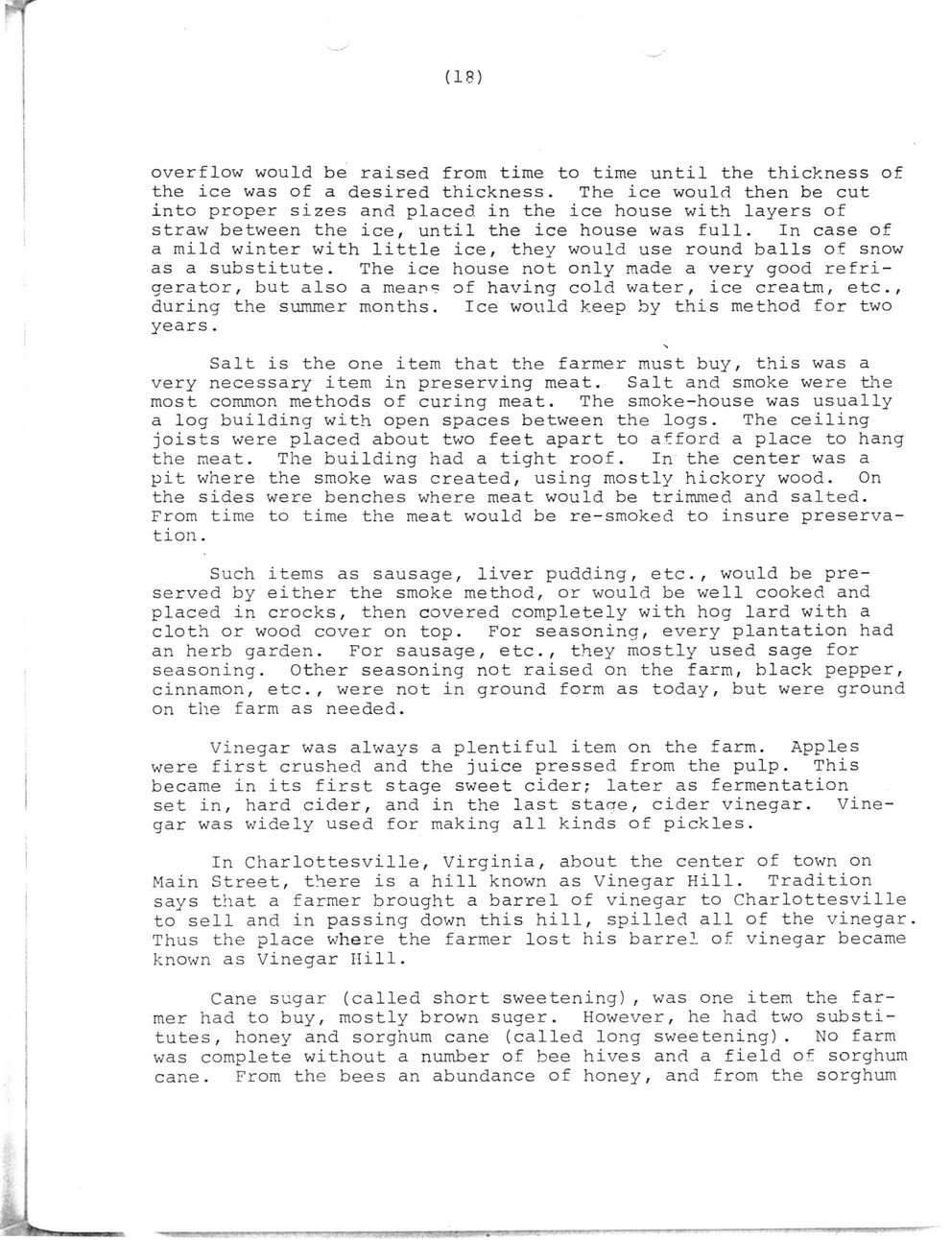This text was obtained via automated optical character recognition.
It has not been edited and may therefore contain several errors.
(18) overflow would be raised from time to time until the thickness of the ice was of a desired thickness. The ice would then be cut into proper sizes and placed in the ice house with layers of straw between the ice, until the ice house was full. In case of a mild winter with little ice, they would use round balls of snow as a substitute. The ice house not only made a very good refrigerator, but also a means of having cold water, ice creatm, etc., during the summer months. Ice would keep by this method for two years. Salt is the one item that the farmer must buy, this was a very necessary item in preserving meat. Salt and smoke were the most common methods of curing meat. The smoke-house was usually a log building with open spaces between the logs. The ceiling joists were placed about two feet apart to afford a place to hang the meat. The building had a tight roof. In the center was a pit where the smoke was created, using mostly hickory wood. On the sides were benches where meat would be trimmed and salted. From time to time the meat would be re-smoked to insure preservation . Such items as sausage, liver pudding, etc., would be preserved by either the smoke method, or would be well cooked and placed in crocks, then covered completely with hog lard with a cloth or wood cover on top. For seasoning, every plantation had an herb garden. For sausage, etc., they mostly used sage for seasoning. Other seasoning not raised on the farm, black pepper, cinnamon, etc., were not in ground form as today, but were ground on the farm as needed. Vinegar was always a plentiful item on the farm. Apples were first crushed and the juice pressed from the pulp. This became in its first stage sweet cider; later as fermentation set in, hard cider, and in the last stage, cider vinegar. Vinegar was widely used for making all kinds of pickles. In Charlottesville, Virginia, about the center of town on Main Street, there is a hill known as Vinegar Hill. Tradition says that a farmer brought a barrel of vinegar to Charlottesville to sell and in passing down this hill, spilled all of the vinegar Thus the place where the farmer lost his barrel of vinegar became known as Vinegar Hill. Cane sugar (called short sweetening), was one item the farmer had to buy, mostly brown suger. However, he had two substitutes, honey and sorghum cane (called long sweetening). No farm was complete without a number of bee hives and a field of sorghum cane. From the bees an abundance of honey, and from the sorghum

Carr, Hugh Turner My-First-80-Years-Aboard-The-Planet-Earth-026